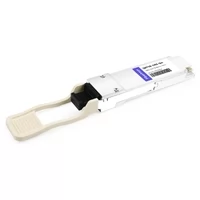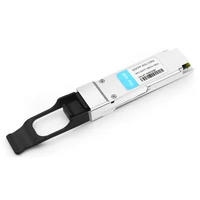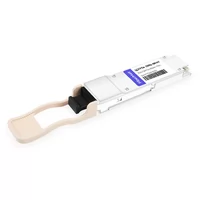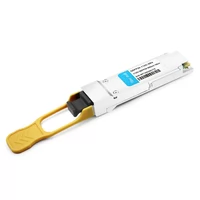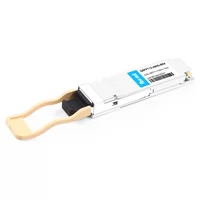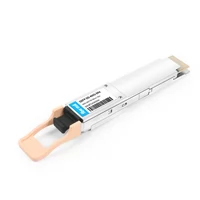Today’s digital world is fast-paced and demands faster, more reliable data transfer than ever. Multi-fiber push-on (MPO) transceivers are at the forefront of this need for optical connectivity solutions, which facilitate efficient networking that can handle large capacities. We aim to break down MPO transceivers by looking at what they are made of and how they work within current telecommunication systems and data centers. To achieve higher network performance through these devices in more complicated infrastructures where networks have become very complex indeed, it would be necessary for someone to know about the technical specifications and benefits associated with MPO technology so that they may use them appropriately, thereby creating uninterrupted connections.
Table of Contents
ToggleWhat is an MPO Transceiver?
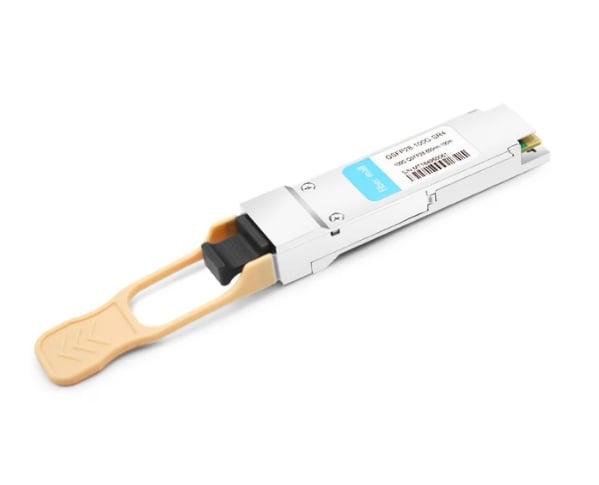
Introduction to MPO Transceivers
Multi-fiber push-on (MPO) transceivers are high-density optical connectors designed to terminate multiple fibers within a small form factor. Usually, these types of transceivers follow either the 12-fiber or the 24-fiber standard configuration, enabling them to save space and simplify installation in data centers and telecom networks. MPO transceivers operate based on using more than one optical fiber in parallel to maximize data transmission speeds and overall bandwidth capacity. This technology comes in handy, especially when dealing with high-speed networks requiring efficient and dependable connections, making multi-fiber push-on connectors an essential part of any present-day optic network system.
How Does an MPO Transceiver Work?
MPO transceivers can function because of the rules that govern parallel optical communication. Each of these transceivers has several individual fibers running in parallel, thus enabling the transmission of data across several channels without requiring many connectors. The electrical data signal is transformed into an optical one with the help of a laser diode or vertical-cavity surface-emitting laser (VCSEL) array, after which it gets transmitted through these fibers. At the receiving end, photodetectors convert optical signals back into electrical ones. This method allows MPO transceivers to achieve much higher data rates than traditional single-fiber systems while reducing latency and maximizing bandwidth utilization. Furthermore, the MPO interface simplifies connectivity by enabling users to connect multiple fibers using one connector only, thereby improving the overall efficiency of installations in high-density environments.
Applications of MPO Transceivers in Networking
MPO transceivers are being increasingly used in various networking applications because they can support high-speed data transmission and dense fiber deployment. They have several different uses, including:
- Data Centres: In cloud computing and big data applications where quick storage solutions are vital, MPO transceivers allow fast processing by creating high-bandwidth connections between switches and servers.
- Telecommunications Networks: These devices form part of backbone or metro network infrastructures that create the necessary capacity for broadband access to end-users.
- Enterprise Networks: By increasing local area network (LAN) speeds, MPO transceivers assist with corporate bandwidth needs as businesses continue to grow their demand for this resource.
- Content Delivery Networks (CDNs): These transceivers can process multiple high-speed channels simultaneously, making them very efficient at distributing content online. This leads to quicker accessibility times and better user experiences overall.
- Mission-Critical Applications: MPO transceivers are commonly used within financial services, where uninterrupted data flow is crucial for healthcare facilities streaming services. These sectors rely heavily on this type of technology due to its reliability and ability to provide consistent, high-quality connections at all times.
These examples show how adaptable yet essential these devices are when supporting contemporary network requirements.
Types and Specifications of MPO Transceivers
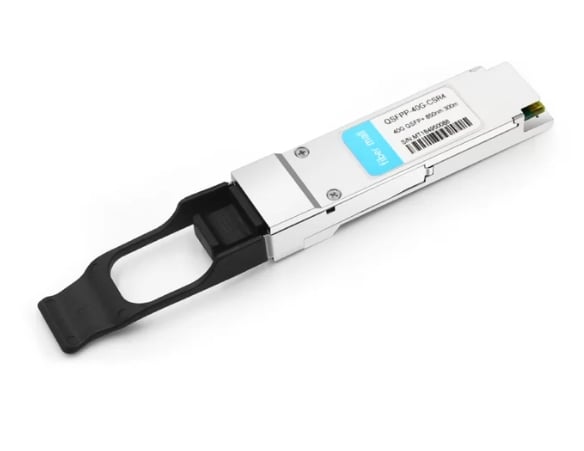
Different Types of MPO Transceivers: SR4, PSM4, and More
Various kinds of MPO transceivers serve different networking requirements and specifications. Among them, there are two main types:
- Short Range 4 (SR4): This type is designed for short-distance data transmission. Typically, SR4 transceivers use multimode fibers and can transmit data at a speed of 100 Gbps over a distance of 100 meters. They are ideal for data center applications where high bandwidth is required within a limited range.
- Parallel Single Mode 4 (PSM4): Unlike SR4, PSM4 transceivers employ single-mode fibers, which allow for long-range data communication up to 500 meters while maintaining the same data rate of 100 Gbps. Such design reduces signal loss, making this type suitable for telecommunications networks, among other long-haul usages.
LR4 (Long Range 4) and DWDM (Dense Wavelength Division Multiplexing) are other types of MPO transceivers with different functionalities optimized for diverse network environments. Knowing these differentiations helps professionals choose the suitable transceiver for their infrastructure needs.
Specifications: Data Rates, Connectors, and Fibers
In networking applications, MPO transceivers must meet certain important specifications to ensure the best performance. These include connector types, data rates, and fiber specifications.
- Data Rates: Commonly indicated data rates for MPO transceivers include 10 Gbps, 25 Gbps, and 100 Gbps. These rates have been necessitated by various applications, such as cloud services and data centers, which require more bandwidth due to their increased size.
- Connectors: Usually, the connectors used in an MPO transceiver are of the MPO/MTP type, i.e., they are multi-fiber termination push-on connectors. This design allows many fibers to be connected simultaneously, thereby making connections more efficient while simplifying large-scale deployments by reducing the number of individual connections required.
- Fibers: An MPO transceiver is designed to operate with multimode and single-mode fibers. Multimode fibers are generally used in short-range applications (SR4), whereas single-mode ones are necessary for long-distance applications (PSM4). The transceiver signal integrity and overall system performance will be affected depending on the fiber chosen.
Knowing these specs helps one choose appropriate MPO transceivers for their networking needs, allowing them to effectively deal with different challenges brought about by their environments.
Understanding MPO SR4 from Nvidia Networking
MPO SR4 transceivers are built to handle fast data transfer over short-range networks, particularly optimized for 100G Ethernet applications. These transceivers are based on multimode fiber technology, one of Nvidia Networking’s products, with an 850nm wavelength, which allows signals to be sent effectively through short distances, usually around 100 meters, on OM4 multimode fiber.
The SR4 configuration uses four active lanes capable of transmitting at 25 Gbps per lane for a total data rate of 100 Gbps. This design maximizes available bandwidth and simplifies cabling infrastructure by using MPO/MTP connectors that offer more flexibility during deployment.
Additionally, among other things, robustness (low latency)and reliability features have been incorporated into Nvidia’s MPO SR4 transceiver mainly because these metrics are vital for high-performance computing environments and data center operations. Such attributes ensure that network experts can attain peak performance while dealing with the increasing needs for information carriage in modern infrastructures.
Benefits of Using MPO Transceivers in Data Centers
Incorporating MPO transceivers into your network infrastructure brings numerous advantages, particularly in today’s data-driven landscape. One key benefit is their ability to support ultra-high data rates, such as 400G and beyond, which is essential for handling the exponential growth in data traffic from AI applications and cloud services.
MPO transceivers also promote scalability, allowing easy upgrades without overhauling existing cabling. Their compact design reduces cabling clutter, lowering installation costs and improving airflow in data centers. Additionally, with lower power consumption compared to traditional transceivers, they contribute to energy-efficient operations, aligning with sustainable networking practices.
From a reliability standpoint, MPO transceivers minimize connection points, reducing the risk of failures and signal degradation. This makes them indispensable for mission-critical environments. At FiberMall, our MPO transceivers are rigorously tested to deliver these benefits, providing cost-effective, high-quality solutions for global data centers and enterprise networks.
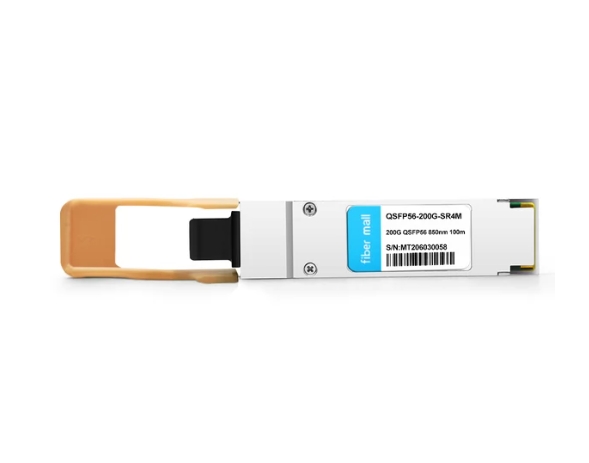
Cost-Effectiveness and Efficiency
Utilizing MPO transceivers in data centers can save money and make operations more efficient. First, this is possible by sending many data streams through one connector, which decreases the entire cabling system and cuts installation-related expenses. This simplified cable infrastructure reduces material costs and makes it easier to manage and scale within the data center so that network architectures can be expanded or reconfigured more rapidly.
Additionally, the space-saving ability of high-density MPO transceivers takes up less room on server racks, allowing for more connections per square foot in any given physical area of a data center. This feature becomes especially useful when dealing with environments limited in real estate since it supports increased bandwidth demands without requiring expansion through space enlargement.
Furthermore, MPO transceivers often consume less power per Gbps than traditional ones, which results in lower energy bills over time. Taken together, these points create a favourable total cost of ownership, making MPOs an attractive option for modern high-performance DCs seeking value-for-money equilibrium.
High Bandwidth and Speed Capabilities
MPO transceivers are designed for fast data transfer in modern data centers, which need it most. Each of these transceivers can support many gigabits per second (Gbps), and some can even send 400 Gbps continuously through the use of advanced multiplexing technologies.
In addition, MPO transceivers with parallel optics technology improve signal integrity while reducing latency, especially when dealing with real-time processing applications. Because these devices enable high-speed transmission, they help data centers handle massive data transfers efficiently, thus suiting bandwidth-hungry programs and accommodating fast-growing network traffic without sacrificing performance quality. To put it differently, without them, integration into any given network will not improve its overall speed capability.
Scalability and Flexibility
MPO transceivers are highly adaptable and scalable in high-performance data centers. One of the main benefits is that the MPO system can be easily adjusted to fit different needs as they occur. This modularity means new transceivers can be added or old ones adjusted without redoing everything.
Moreover, MPOs support many different channels, allowing data centers to adapt their bandwidth according to various channels and cables for different requirements at other times. This flexibility is essential for organizations that may experience rapid growth or fluctuations in traffic volume because it enables them to utilize network resources more effectively so as not only to maintain performance but also reliability throughout such periods while limiting possible disruptions during transitions. Businesses can build robust networks using MPO technology, which will serve today’s needs and be capable of supporting future changes associated with fast-paced technological development.
How to Choose the Right MPO Transceiver
Selecting the appropriate MPO transceiver involves considering several factors to ensure optimal performance. Start by assessing your distance requirements: For short links under 100m, opt for SR4 models; for longer hauls, PSM4 or LR4 variants are better suited.
Compatibility is crucial—verify that the MPO transceiver matches your switch or router’s form factor, such as QSFP or OSFP. Bandwidth needs should guide your choice; for 100G applications, standard MPO transceivers suffice, but for 400G, look for advanced polarity-managed options.
Budget and vendor reliability also play a role. Choose providers like FiberMall, renowned for leadership in AI-enabled communication networks, offering value-driven MPO transceivers with comprehensive warranties. For personalized advice, visit our official website or contact our customer support team to find the ideal MPO transceiver for your setup.
How to Install and Maintain MPO Transceivers
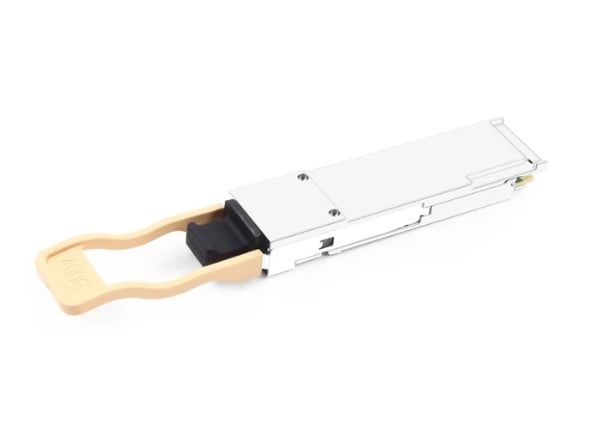
Installation Guide for MPO Transceivers
Many necessary steps must be followed when installing MPO transceivers so that they work well and give the most desirable results. To start with, all the required equipment must be available, which may include a fiber optic cleaver, polishing kit, and safety gear, among others.
- Preparation: First, identify the correct MPO connector type and fiber type (single-mode or multi-mode) that matches your current network infrastructure. Ensure compatibility between all transceivers and their respective patch cables.
- Cleaning Connections: To avoid contamination leading to signal loss, it is essential to clean the connectors of MPO properly using lint-free wipes and optical cleaning solutions.
- Connection Setup: Put the MPO transceiver into its slot on the switch or other networking device. Make sure the connector faces the right direction so there will be no data transmission problems due to misalignment, etcetera.
- Testing: Carry out visual inspection after completing installation, then use a power meter to check connection continuity and loss. The throughput ought to meet network-specified requirements, so this also has to be verified.
- Documentation: Keep a record of installation parameters, including performance metrics, alongside port assignments because such details can help during troubleshooting in the future.
For maintenance purposes, ensure regular connector cleanliness checks and verify network performance at predetermined intervals to mitigate potentialities. Regarding both installation and servicing, always adhere strictly to manufacturer guidelines since failure may compromise compliance coupled with integrity-related performance.
Maintaining and Troubleshooting MPO Transceivers
Maintenance and troubleshooting are fundamental aspects of managing MPO transceivers in high-speed networks. Routine inspections should check for dust or debris on connectors and clean them using the right methods where necessary. Diagnostic tools like optical power meters or network analyzers should be used to monitor network performance so that any deterioration in signal quality can be noticed as soon as possible.
If users experience intermittent connectivity, they ought to confirm whether their transceivers are compatible with the existing hardware; this includes matching firmware versions and ensuring all cables are tightly connected. If persistent problems occur, one may need to recalibrate or replace faulty parts. Looking at historical performance data helps identify recurrent issues, allowing for early fixing before causing much disturbance in the network. By following these maintenance procedures, establishments increase the lifespan of MPO transceivers while maintaining integrity across their networks.
Best Practices for Long-Term Use
One should use MPO transceivers for the long run. In this way, network dependability and efficiency can be greatly increased. First, it is necessary to maintain a controlled environment where these transceivers are stored or operated within certain temperature and humidity ranges so as not to destroy them. Second, correct cable management techniques ought to be used to avoid connector stress while preventing possible tangling that may result in wearing out.
It also matters that personnel are trained regularly on how best they can handle and install MPO transceivers to minimize human mistakes during maintenance activities. If only high-quality compatible components are used together with following manufacturer instructions on installation and upgrades, then it will guarantee maximum performance and extend the overall equipment life span. Finally, having a strong system that records all maintenance works done, performance metrics achieved, plus repairs made can help identify long-term trends, thus informing strategic decisions relating to infrastructure investments.
Compatibility and Standards for MPO Transceivers
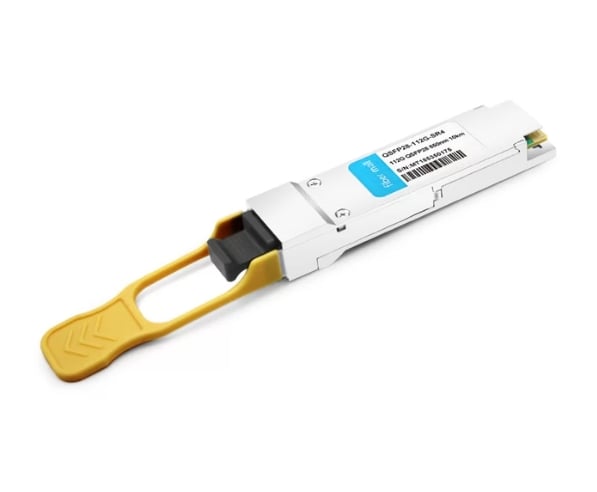
Cisco Compatible MPO Transceivers
Cisco-compatible MPO transceivers are made to blend well with Cisco networking equipment without compromising industry regulations. These transmitters have different variations, including the 40G and the 100G, which can be essential for various network needs. While choosing these devices, they must meet Multi-Source Agreement (MSA) standards for optical transceiver compliance, ensuring that they work together with products from other manufacturers.
Major manufacturers of Cisco-compatible MPO transceivers typically provide detailed technical specifications to guarantee conformance with Cisco’s operational requirements, among other things. These brands feature low power consumption, high data rates, and strong resistance against harsh environmental conditions. Suppliers who offer certifications and warranties add more credibility and reliability when using any type of MPO transceiver within a Cisco environment. Careful consideration during selection and installation will increase networks’ efficiency and life span.
Understanding MSA Standards for MPO Transceivers
The Multi-Source Agreement (MSA) standards for MPO transceivers create rules that make optical transceiver products work with each other, even though different manufacturers make them. These standards describe how things should be built so that they can communicate with other pieces of equipment and work well in networks. They also say what the device should look like, where the pins go, and how well it should work, such as how much extra bandwidth is allowed or how good the return loss should be – in other words, these qualities help to know if a product will fit into many different environments successfully. Following guidelines from MSA not only allows for interchangeable parts but also ensures consistent performance and quality across all devices which is important for keeping networks strong. It’s necessary to check whether the chosen MPO transceivers correspond to those rules while ensuring stable network performance without compatibility hitches.
Multi-mode vs. Single-Mode Fiber Optic Cables
Multi-mode and single-mode fiber optic cables have different roles in network infrastructure because they have different core sizes and can transmit signals effectively over differing distances. The core of a multi-mode cable is significant: it is usually around 50 or 62.5 microns across, which enables many light modes to move through it at the same time; therefore, this design is used for shorter distances, typically ranging up to 2 kilometers, thus making them suitable for local area networks (LANs) and data centers.
On the other hand, single-mode fiber optics have about 9 microns wide cores, allowing only one light mode to pass through them. This reduces signal loss by a significant margin, enabling transmission over long distances exceeding 40 kilometers more often than not. They are commonly applied in wide area networks (WANs) and any situation where high bandwidth capacity is needed for communication across large geographical areas.
Whether to use multi-mode or single-mode fiber optic cable depends on specific application requirements, distance considerations, and desired bandwidth usage. Knowing these disparities is essential to designing efficient and reliable networks.
Future Trends in MPO Transceiver Technology
The evolution of MPO transceivers is closely tied to emerging technologies like 800G Ethernet and AI-driven networks. Future developments include enhanced silicon photonics integration, enabling even higher densities and lower latencies.
Sustainability will drive innovations, with eco-friendly materials and power-efficient designs becoming standard. Additionally, advancements in polarity management and breakout cables will simplify deployments in hybrid cloud environments.
As a pioneer in optical-communication solutions, FiberMall is at the forefront of these trends, developing next-generation MPO transceivers for wireless systems and access networks. Stay ahead by exploring our offerings on the official website.
Reference Sources
Frequently Asked Questions (FAQs)
Q: What is an MPO transceiver, and how does it work?
A: An MPO transceiver is a type of optical transceiver module made for high-density applications. It functions by transmitting and receiving optical signals through an MPO cable connected to multiple fibers, enabling quick data transfer over short distances.
Q: What are the advantages of using MPO transceivers?
A: Several advantages come with using MPO transceivers, including the ability to make many connections in a small space, simplify cabling, and operate at high data rates. Hence, these modules are essential in areas where space and efficiency are critical, like data centers.
Q: What is the difference between SMF and MMF in the context of MPO transceivers?
A: In fiber optic transceivers, SMF(single-mode fiber) and MMF (multi-mode fiber) refer to different types. Single-mode fibers are used for long-distance communications, while multi-mode fibers such as OM4 multimode fiber are designed for shorter distances but have higher speeds within a data center.
Q: How does an MPO transceiver connect to other network devices?
A: Other network devices are connected with an MPO cable, which contains many fibers in one connector. This allows easy interconnection with qsfp28,sfp, and other types of transceivers, thereby ensuring smooth information transmission.
Q: What applications commonly use MPO transceivers?
A: Commonly used applications of the MPo type include data centers, enterprise networks, and high-performance computing environments. They offer support for Ethernet, Fiber Channel, and InfiniBand, thus providing high-speed connectivity over short distances.
Q: What is the maximum distance for cables with MPO transceivers?
A: The maximum distance of cables used with MPO transceivers depends on the type of optical fiber cable employed. An OM4 multimode fiber, for instance, can cover 100m, while long-reach single-mode fibers can be used for greater distances depending on the application.
Q: Which specific modules are compatible with MPO transceivers?
A: Compatible modules for MPO transceivers include the qsfp28 100gbase-sr4 850nm 100m dom, 40g qsfp, and psm4 transceiver modules, which support high-speed data transfer and can seamlessly integrate with existing network infrastructure.
Q: What are some common characteristics of MPO transceiver modules?
A: Typical features include support for high data rates up to 100g, compliance with qsfp28 MSA standards, multimode applications using 850 nm wavelength, and working together with fiber patch cords or MPO cables for dense connections.
Q: About MPO transceivers, what do OMC and DOM signify?
A: Multi-channel capability is represented by OMC (Optical Multi-channel Communication), which means that these devices can concurrently send/receive information through several fibers. Digital optical monitoring allows one to monitor real-time performance, ensuring reliable data transmission by this particular type of receiver/transmitter module.
Q: How do they impact DC efficiency levels?
A: Data centers’ operational efficiencies are greatly improved by the employment of M.P.Os, as they provide higher-density interconnects. This reduces cabling complexity, leading to utilization space improvement, thus lowering total costs incurred during operations while at the same time boosting overall network performance due to its ability to handle large amounts of traffic at any given time.
Related Products:
-
 QSFP28-100G-SR4 100G QSFP28 SR4 850nm 100m MTP/MPO MMF DDM Transceiver Module
$40.00
QSFP28-100G-SR4 100G QSFP28 SR4 850nm 100m MTP/MPO MMF DDM Transceiver Module
$40.00
-
 40G QSFP+ CSR4 850nm 300m MTP/MPO MMF DDM Optical Transceiver Module
$30.00
40G QSFP+ CSR4 850nm 300m MTP/MPO MMF DDM Optical Transceiver Module
$30.00
-
 QSFP56-200G-SR4M 200G QSFP56 SR4 PAM4 850nm 100m MTP/MPO APC OM3 FEC Optical Transceiver Module
$139.00
QSFP56-200G-SR4M 200G QSFP56 SR4 PAM4 850nm 100m MTP/MPO APC OM3 FEC Optical Transceiver Module
$139.00
-
 QSFP28-112G-SR4 112G OTU4 QSFP28 SR4 850nm 100m MTP/MPO MMF DDM Transceiver Module
$50.00
QSFP28-112G-SR4 112G OTU4 QSFP28 SR4 850nm 100m MTP/MPO MMF DDM Transceiver Module
$50.00
-
 QSFP112-400G-SR4 400G QSFP112 SR4 PAM4 850nm 100m MTP/MPO-12 OM3 FEC Optical Transceiver Module
$450.00
QSFP112-400G-SR4 400G QSFP112 SR4 PAM4 850nm 100m MTP/MPO-12 OM3 FEC Optical Transceiver Module
$450.00
-
 QSFP-DD-400G-SR4 QSFP-DD 400G SR4 PAM4 850nm 100m MTP/MPO-12 OM4 FEC Optical Transceiver Module
$450.00
QSFP-DD-400G-SR4 QSFP-DD 400G SR4 PAM4 850nm 100m MTP/MPO-12 OM4 FEC Optical Transceiver Module
$450.00
Related posts:
- How many years are there before CPO technology is practical?
- Overview of 400G QSFP-DD Optical Transceiver Module
- 800G SR8 and 400G SR4 Optical Transceiver Modules Compatibility and Interconnection Test Report
- HPE 400GbE QSFP-DD Product Guide: Everything You Need to Know About HPE Cables, Transceivers, and Adaptor Kits

